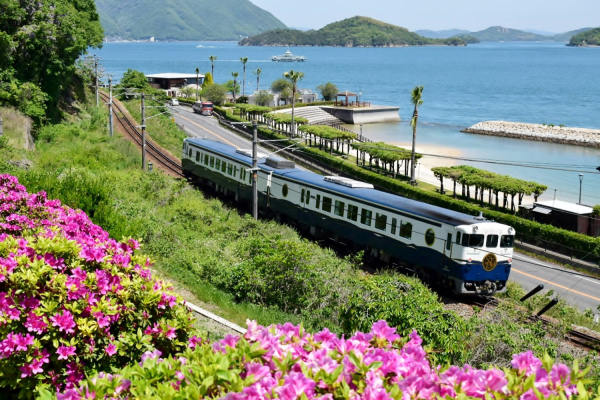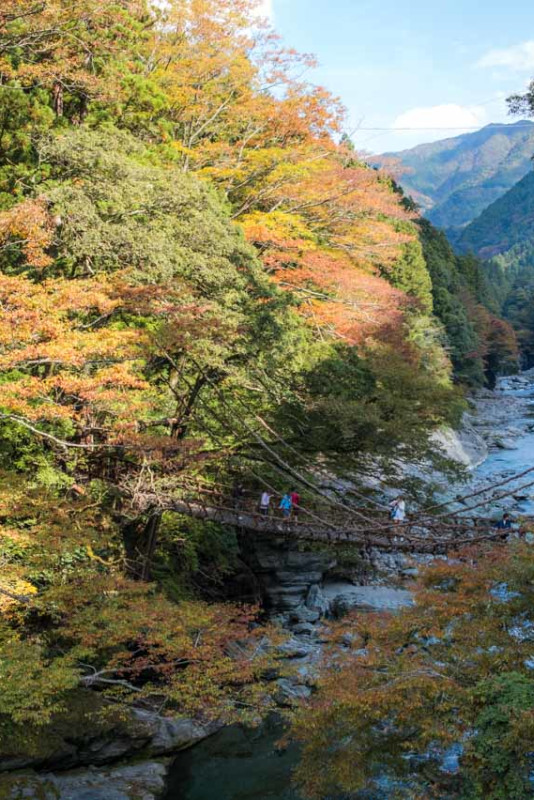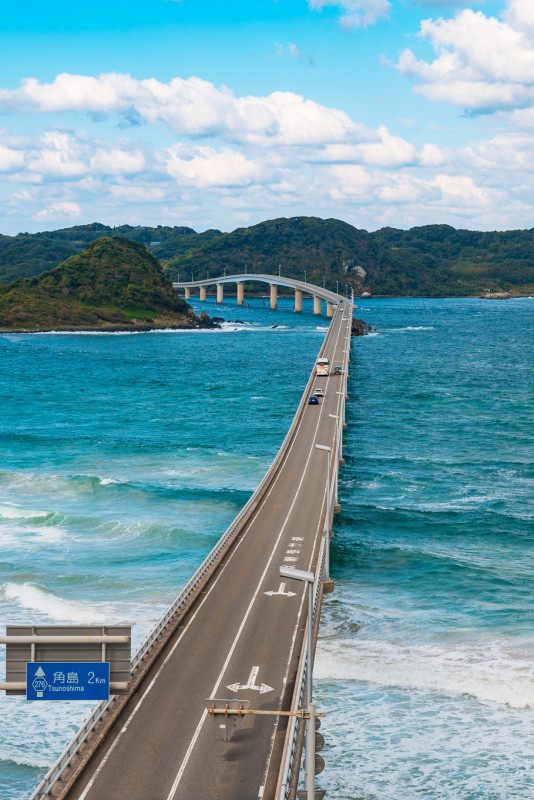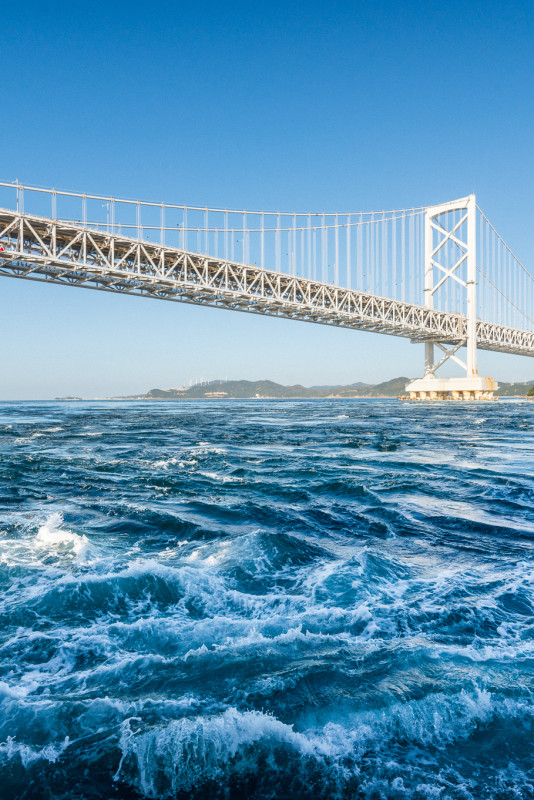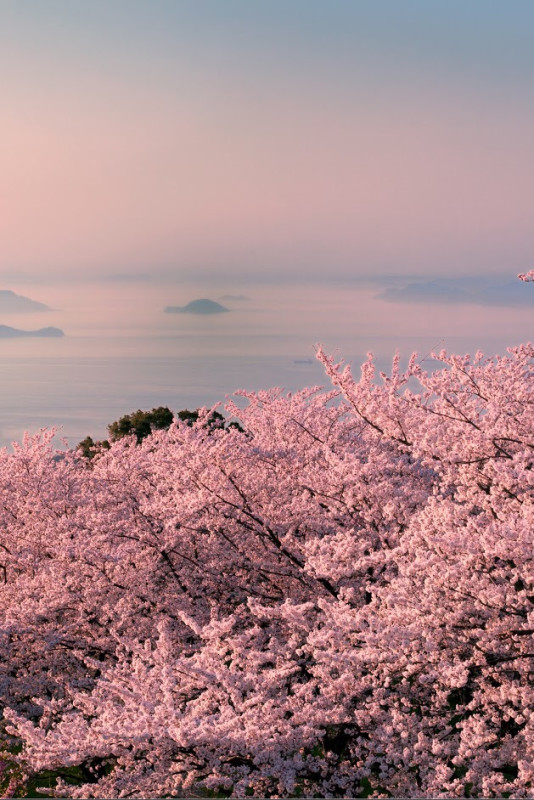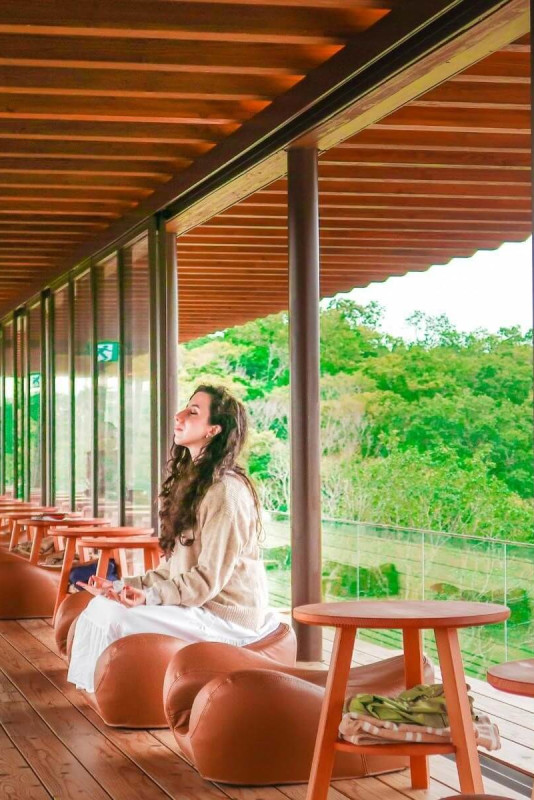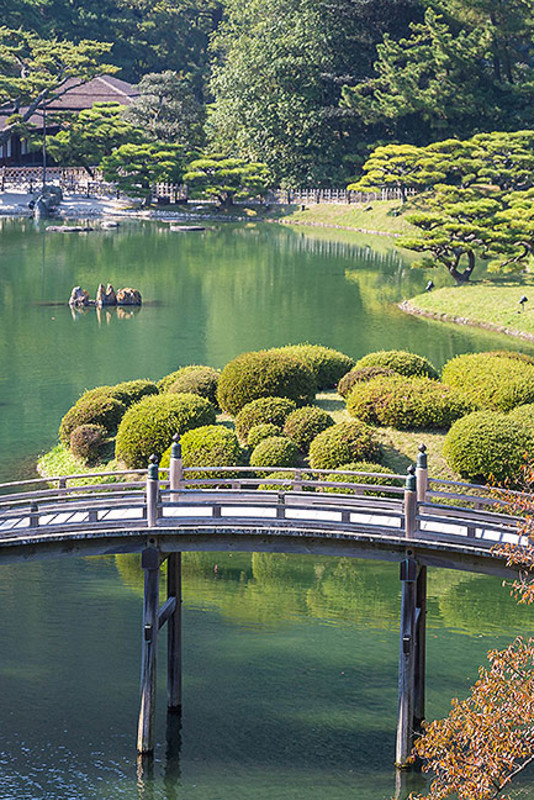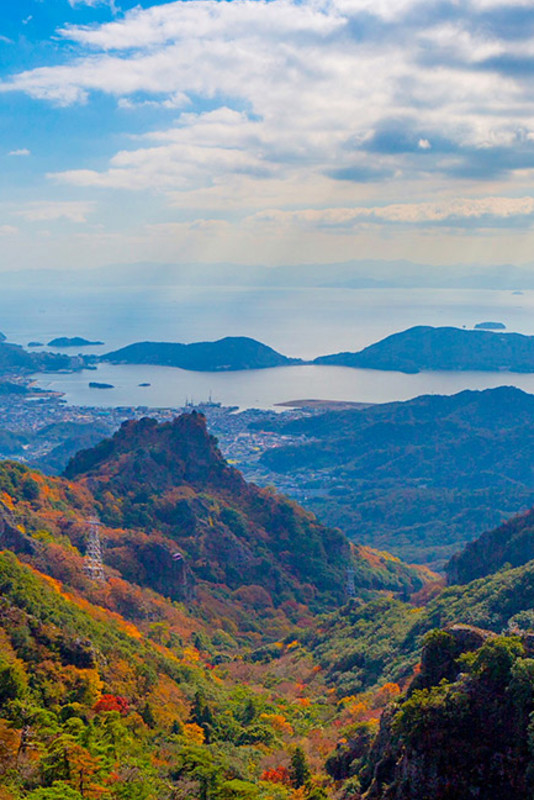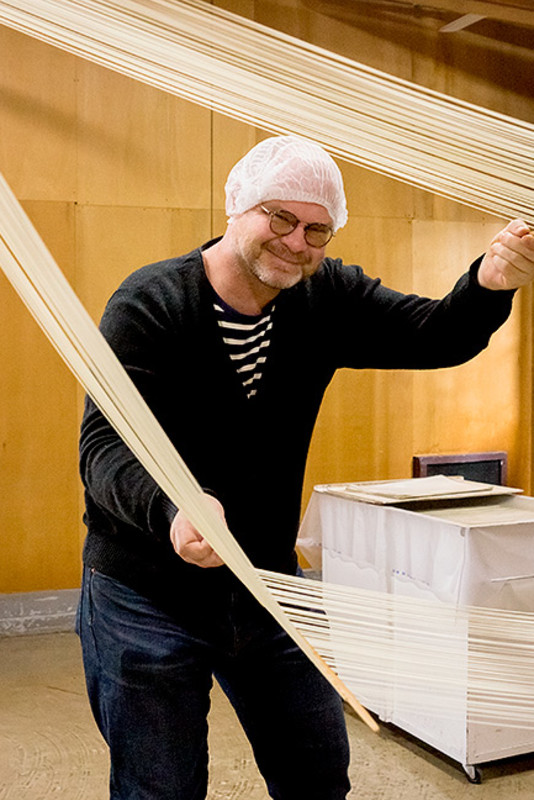Itineraries
Four Days of Nature and Adventure in Setouchi

Regardless of your level of fitness, you can fully enjoy this active four-day tour around the Setouchi. This itinerary will satisfy thrill seekers as well as travelers searching for something a little different during their travels in Japan.
- Day 1
- Awaji Island
Travel: Osaka to Awaji Island
・Take the train from Osaka Station to Akashi Station (Approx 45 minutes)
・Awaji Island is best explored by rental car or chartered taxi
Awaji Island
The largest of the Seto Inland Sea islands, Awaji is located conveniently close to Kobe (as well as Osaka and Kyoto) and it has an impressively eclectic range of attractions to offer the visitor. In addition to anime-related themed parks, you will find incredible architecture, gorgeous nature, laid back cafes serving great food and unique cultural heritage. Awaji Island is best explored by rental car or chartered taxi. Pick and choose from the options below to fit your interests.
Climb the Akashi Kaikyo Bridge
When the Akashi Kaikyo Bridge opened in 1998 linking Kobe on the mainland to Awaji Island, it had the longest span of any suspension bridge in the world. As well as its length, the enormous support towers on the Akashi Kaikyo Bridge rise an astounding 300m above sea level. You can ascend the towers if you sign up for the Bridge World tour run by bridge operators Honshu-Shikoku Bridge Expressway Company Ltd. This thrilling tour will take you underneath the road section and up the towers to the viewing platform at the top. The panoramic view from the platform is astounding. This is not recommended for anyone with a fear of heights!
URL: https://www.jb-honshi.co.jp/english/bridgeworld/
Zen Meditation at Zenbo Seinei
Designed by Pritzker Prize-winning architect Shigeru Ban, Zenbo Seinei is a Zen retreat and wellness facility on Awaji Island. The incredible wooden deck jutting out from a ridge removes the boundaries between you and the surrounding countryside. This is the perfect place to practice Zen meditation and realign yourself with nature. They also offer original, healthy, vegan “Zenbo Cuisine”, and accommodation options. They have different plans available so make sure to check their website before you go.
URL: https://zenbo-seinei.com
Awaji Yumebutai and Honpukuji Temple - Tadao Ando’s Architecture
The architecture of Tadao Ando, another Pritzker Prize winner, has become synonymous with the Setouchi and his works are dotted throughout the region. Awaji Island, however, boasts a high number of his architectural masterpieces.
Awaji Yumebutai incorporates a variety of themes and architectural concepts throughout an expansive development, which includes an international conference center and the hotel Grand Nikko Awaji (also designed by Ando) and observation terraces. Highlights include the Hyakudan-en Garden and Promenade Garden, a Greek-style open-air theater, and a greenhouse. The hotel also features the Church of the Sea with its impressive cross of light.
Honpukuji Temple- another of Ando’s masterpieces - is a 10-minute drive from Awaji Yumebutai. Known as the water temple, Honpukuji Temple appears as a large pond covered in water lilies – an important symbol in Buddhism. A narrow flight of steps descends through the center of the pond and leads to the main temple hall and altar.
Ayuya Waterfall
Down river from the scenic Aiyagawa Dam The enchanting Ayuya Waterfall is one of Awaji’s best kept secrets and a detour here will leave you feeling refreshed and rejuvenated. You can get near the waterfall for pictures, but take care because the footpath can get slippery.
Awaji Ningyo Joruri
Awaji puppet theater has a history stretching back to 1643 and most puppet theater styles in Japan can trace their origins to Awaji. This includes the famous Bunraku that was named after puppet master Uemura Bunrakuken who came from Awaji. Today, the best way to see a live performance is to visit the Awaji Puppet Theater (Awaji Ningyoza) in Minami Awaji. The theater has performances six days a week and offers backstage tours where you can see the puppets up close and learn how the puppeteers operate them.
URL: https://awajiningyoza.com/en/top/
Cafe culture on Awaji
With beautiful scenic coastlines and lush mountains, Awaji Island is not short for idyllic locations for cafes and restaurants. Miele is one of the island's most popular cafes and has a superb view of the Seto Inland Sea. Happy Pancake at Awajishima Terrace is another popular café on Awaji’s western coastline with superb views of the sea. The pancakes, drinks and atmosphere are delightful. No wonder it gets very busy at weekends and holidays! Rakutogama is a café, gallery and working pottery studio all rolled into one. Heavily involved in community initiatives, Rakutogama is the place to go if you want to connect and learn more about the island. Housed inside a renovated period building in Sumoto City, Farm Studio Café is the place to come to enjoy healthy meals and drinks made from the best local ingredients.
Awaji Beef and Awaji Onions
For a true taste of Awaji, make sure to try both Awaji’s beef and the island’s onions.
Awaji Island produces around 70% of Hyogo Prefecture’s Tajima beef cattle - with most going on to be sold as Kobe Beef. Since 1986, The Association for Awaji Beef Branding Promotion has been promoting Awaji Beef as a brand in its own right. To be sold under the Awaji brand, the beef must be from cattle born, bred, and processed on Awaji Island and pass a rigorous series of quality checks. This ensures any Awaji Beef you eat will be of the highest quality.
Awaji’s climate and rich mineral-laden soil is perfect for growing some of the finest onions in Japan. Awaji’s onions are renowned for their mild, sweet taste. The island’s chefs adore Awaji onions and their versatility. Depending on the variety, chefs use them raw in salads, caramelized in savory dishes, or incorporate them into traditional Japanese cuisine. The first varieties of onion to hit the shelves are usually the sweet shin-tamanegi. These are ready to be harvested around March and April, making this a great time of year to visit if you like your onions.
Accommodation: Hotel New Awaji
With its stunning seafront location in Sumoto City and breathtaking views from every room, Hotel New Awaji is one of the top luxury accommodation options in Awaji for guests seeking a perfect blend of high-end service and tranquility. The hotel boasts elegantly designed rooms and suites and the Villa Rakuen for larger groups. Several rooms come with private ensuite balcony baths. The hotel also provides larger spas and bathing options for all their guests.
Hotel New Awaji prides itself on its cuisine and they source their seasonal ingredients from across the island. Meals include a wide range of freshly caught seafood, delicious local vegetables and Awaji’s famous beef all cooked to perfection.
URL: https://www.newawaji.com/english/
- Day 2
- Naruto, Wakimachi and Iya Valley
Travel: Hotel New Awaji to Naruto
・Travel by car, taxi or bus from Sumoto to Naruto on the eastern tip of Shikoku
Naruto Whirlpool Cruise
The Seto Inland Sea sees two huge tidal shifts each day. In the Naruto Strait, the tidal water is funneled through a narrow channel, which creates the famous Naruto whirlpools. Although you can see the whirlpools from the bridge, going on a whirlpool cruise is by far the best way to get up close to these iconic eddies. There are a number of different cruise operators running out of Naruto and they adjust departure times to match the tidal changes.
Travel: Naruto to Wakimachi Town
・Take the train or a bus from Naruto Station to Tokushima Station (Approx 40-50 minutes)
・Take the Tsurugisan Limited Express train from Tokushima Station to Anabuki Station (Approx 40 minutes)
・Wakimachi is 10 minutes by taxi from Anabuki Station.
Explore Udatsu Street and Try Aizome Dyeing
The town of Wakimachi was the heart of Tokushima’s aizome indigo dyeing industry during the Edo period (1603-1868).
Tokushima (formerly known as Awa) has been a center of indigo dye production for around 800 years. The land, well-irrigated by the Yoshino River, is ideal for growing the indigo plant (ai) from which the natural dye is extracted. Demand was ensured by a statute that Indigo blue was one of the few colors samurai were allowed to wear during the Edo period (1603-1868). As techniques improved Awa-ai became renowned for its quality and merchants in towns like Wakimachi prospered.
The historical Udatsu Street in the center of the town is an illustration of the wealth the industry generated. Udatsu is the name given to the earthen firebreaks fixed between the houses, but here in Wakimachi they also served as ornate signifiers of wealth. Walking the streets of Wakimachi is a delight as many of the period buildings have been beautifully preserved and restored.
You can try your hand at indigo dyeing yourself at the Mima-shi Kankokoryu Center. You can dye and create patterns on your very own indigo handkerchief and browse other aizome products for sale in the shop.
Travel: Wakimachi to Iya Valley
・It takes between 1 and 2 hours by train (with a change in Awa Ikeda) to travel from Anabuki Station to Oboke Station, the gateway to the Iya Valley.
・Taxis or rental cars are recommended when traveling around Iya Valley.
Accommodation: Tougenkyo-Iya
Tougenkyo-Iya is a collection of eight pristine Japanese thatched roof farmhouses in the mountain village of Ochiai in Higashi-Iya. This is the quintessential Japanese “satoyama” landscape where village life and nature overlap and cohabit the same space. The houses, built on the mountain during the Edo period (1603-1868), have been beautifully renovated to allow guests to experience traditional Japanese country living in comfort.
All the houses look out at the beautiful valley below and you have the option of catered meals with local dishes prepared for you by locals. Tougenkyo-Iya goes beyond the usual vacation lodging. Staying here will give you a chance to discover the essence of Japanese life and culture.
URL: https://www.tougenkyo-iya.jp/reservation/
- Day 3
- Oboke Gorge and Kotohira
White Water Rafting in Oboke Gorge
The adventurous can find white water rafting operators along the Yoshino River. This river is regarded as one of the best white water rafting locations in the world – so much so they staged the 2017 World Rafting Championships on the river. For over ten years, Happy Raft, founded by experienced Australian rafter Mark Treston, has been guiding visitors through the rapids and offering other exotic gorge-based activities like canyoning. Along the gorge, you will find wonderful viewpoints offering breathtaking views of the area. If you are lucky with the weather conditions, you might witness the sea of clouds (unkai) that can form in the valley below.
Travel: Oboke Station to Kotohira
If using public transport, take the JR Limited Express service from Oboke Station to Kotohira (Approx 45 minutes).
Shikoku Mannaka Sennen Monogatari
If you want to travel in style, board the Shikoku Mannaka Sennen Monogatari. This scenic train offers a more leisurely approach to seeing the beauty of the Shikoku countryside and majesty of the Oboke Gorge. The beautifully designed train runs from Tadotsu and offers a fine selection of season on-board meals with ingredients sourced from the region.
URL: https://www.jr-eki.com/global/en/travel/sennen_top/index.html?_gl=1*jsv3rr*_ga*MTg2NTgxMDYzNy4xNjQ0ODE4MzIx*_ga_K0B5H69NMS*MTcwNzM1NTE4MC4yMzIuMC4xNzA3MzU1MTgwLjAuMC4w/
Mt Shiude and Chichibugahama Beach
If you have your own transport, these two scenic spots are worthy of a detour on your way to Kotohira.
The panoramic view from the top of Mt Shiude was selected to represent the Setouchi Islands in the New York Times “52 Places to Go” list in 2019 and the mountain is regarded as one of the finest cherry blossom viewing spots in Japan. There are over a thousand cherry blossom trees growing on the mountain and in late March to early April the mountain bursts into life. Due to limited parking and the potential for overcrowding, you should pre book any visit during cherry blossom season here.
Chichibugahama Beach is becoming a go-to destination for Instagrammers and photo enthusiasts. By angling the camera close to Chiboga’s tidal pools, you can capture a reflection of the horizon and the sky similar to the popular images from the Uyuni Salt Flats in Bolivia.
Accomodation: Shikishimakan
Opened in 2019, Onyado Shikishimakan is a hot spring ryokan hotel with exceptional service, pristine rooms, and delicious cuisine. The staff think of everything to make your stay in Kotohira as relaxing as possible. It is the perfect place to rest your legs before tackling the vast stone steps that lead up to Konpira Shrine! The impressive façade of the building looks like something out of a period drama. The rooms and hot spring onsens are of the highest quality and the food continually receives rave reviews. In total, the hotel boasts 100 guest rooms and the top floor rooms all come with their own private open-air baths.
URL: https://dormy-hotels.com/en/resort/hotels/shikishimakan/
- Day 4
- Kotohira
Konpira Shrine (Kotohira-gu)
Konpira Shrine (also known as Kotohira-gu) is one of Japan's most famous and revered Shinto shrines. The shrine is dedicated to the god of sailors and seafaring, and visitors need to climb 785 stone steps to reach the main shrine building. If you are feeling more intrepid, you can climb the additional 583 steps to reach the inner shrine at the top of the mountain. As you explore Konpira Shrine, you will be amazed at the architecture, the intricate carvings on the buildings, and the stunning views of the surrounding countryside and the Seto Inland Sea.
Other nearby attractions include Kanamaru-za - Japan’s oldest kabuki theater.
Kinryo Sake Museum
Kinryo Sake has long been a favorite among pilgrims to Konpira Shrine. Kinryo first began brewing sake in 1779 in Tokushima before relocating to Kotohira in 1789. You can learn about the history and development of sake through the ages at the Kinryo Sake Museum. They also have a shop where you can taste the sake and make purchases to take home.
Sanuki Norizome at Somesho Yoshinoya
The colorful banners that stand in front of the Kanamaru-za Theater employ a traditional local dyeing practice known as Sanuki Norizome (Sanuki glue dyeing) which has a history stretching back over 100 years. The dyeing method uses sticky rice paste to mask the fabric, ensuring different colors remain separated in the design. There are two primary techniques used in Sanuki norizome: tsutsugaki (hand-drawing) and katazome (stencil dyeing). Unlike the monochrome indigo aizome dyes in neighboring Tokushima, Sanuki norizome is often used to create brightly colored fabrics used in celebrations like weddings and traditional lion dance festivals. See more examples of this art and pick up some brightly colored souvenirs at Somesho Yoshinoya or arrange a workshop where you can try the technique for yourself.
Sanuki Udon and Nakano Udon School
Sanuki udon noodles is the go-to dish for the region and Kagawa Prefecture is known throughout Japan as the "Udon Prefecture." People travel from around the country to sample these noodles and you will see long lines outside the most popular restaurants. Learn how to make your own udon noodles at the fun Nakano Udon School in Kotohira. Made from just three simple ingredients - flour, water and salt - this will be one recipe you can easily make for friends and family back home. An enjoyable and tasty way to end your trip!
URL: http://www.udonschool.jp






















































































